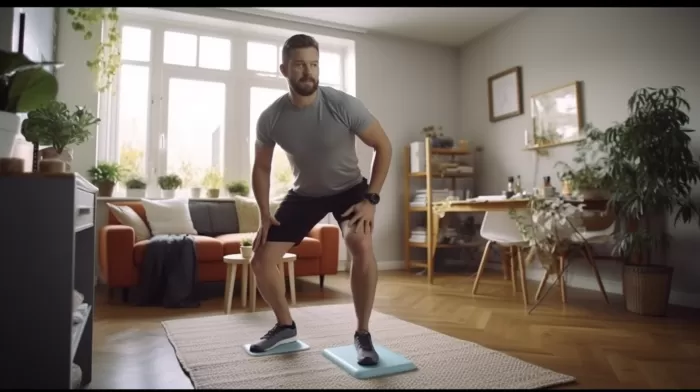If you’re part of the 25% of American adults dealing with chronic knee pain, you know all too well the constant discomfort that comes with it. The good news is that there are natural ways to alleviate knee pain effectively, without resorting to medication. Before diving into these remedies, let’s first explore the causes behind knee pain.
Causes of knee pain
Knee pain can be caused by osteoarthritis, injury, or a combination of both. Osteoarthritis occurs when the cartilage between the bones and joints of your knee wears down, leaving the bones unprotected and causing discomfort and mobility issues. Prescription medications for arthritis can lead to long-term dependency and serious side effects, and do not address the underlying cause of the condition.
Obesity can lead to increased stress on your knee joints and a higher risk of osteoarthritis by speeding up the breakdown of joint cartilage. Knee injuries such as meniscal injuries, anterior cruciate ligament and posterior cruciate ligament injuries, tendinitis, and bursitis can also be the source of your pain. Weak and tight muscles can contribute to knee injuries by not providing enough support for the joint.
Exercises to alleviate knee pain
One of the best ways to alleviate and prevent knee pain is by strengthening the supporting muscles, such as the quadriceps and hamstrings. Flexibility exercises should also be included in your workout routine to loosen tight muscles.
Always warm up before exercising to increase blood flow and prepare your muscles for physical activity. Here are some exercises specifically designed to target the muscles that support your knees:
- Bridges: Lay on your back with your knees bent and feet flat on the floor. Push your hips up toward the ceiling, keeping your back on the floor. Hold for a count of five, then lower. Repeat 10 times.
-
Straight Leg Raise: Lay on your back with your legs straight out. Slowly raise your right leg, contracting your quadriceps muscle. Hold for five counts and lower. Do 10-20 repetitions, then switch to your left leg.
-
Knee Squeezes: Lay on your back with your knees bent and feet flat on the floor. Place a rolled towel or small pillow between your knees. Squeeze your knees together, hold for five counts, and repeat 10-20 times.
-
Hamstring Curls: Stand while holding onto a chair or countertop for balance. Slowly lift your right heel, bringing it to your buttocks, and hold for five counts. Do 10-20 repetitions, then switch to your left side.
-
Calf Raises: Stand facing the back of a sturdy chair or another support, like a wall bar at the gym. Slowly raise your heels as high as you can, then lower. Do three sets of 10-15.
In addition to these exercises, stretching can be beneficial in alleviating knee pain. Here are a few stretches to try:
- Quad Stretch: Lie on your back in front of a doorway with your hips in line with the entryway. Keep your left leg straight, and place your right leg up on the door jamb with a small bend in your knee. Inch forward for a deeper stretch or backward for less sensation. Stay in this position for 10-15 deep breaths, then switch sides.
-
Glute Stretch: Lie on your back with your feet on the floor. Cross your right ankle over your left knee and clasp your hands behind your left thigh. Gently pull your left knee toward your chest. Repeat on the other side.
In conclusion, regular exercise and stretching can help alleviate knee pain, allowing you to enjoy the activities you love. By focusing on strengthening and loosening the muscles that support your knees, you can work towards a pain-free future without relying on medications.



